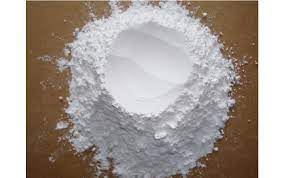Description
Sodium Acid Pyrophosphate: The Unsung Hero of Leavening and Beyond
Sodium acid pyrophosphate (SAPP), often lurking behind the scenes in your favorite baked goods and processed foods, is a versatile ingredient with a crucial role in many applications. This chemical compound, identified by its formula Na₂H₂P₂O₇, belongs to the pyrophosphate family and offers a range of functionalities that make it indispensable in the food industry and beyond.
What is Sodium Acid Pyrophosphate?
SAPP is a white, crystalline powder that is soluble in water. Chemically, it’s a sodium salt of pyrophosphoric acid. Its key characteristic is its acidic nature, which plays a crucial role in its leavening properties and other applications.
The Leavening Powerhouse:
Perhaps the most well-known application of SAPP is as a leavening agent in baking powder. It acts as a slow-acting acid component that reacts with baking soda (sodium bicarbonate) to release carbon dioxide gas. This gas creates the air pockets that give cakes, cookies, biscuits, and other baked goods their light and fluffy texture.
The “slow-acting” aspect is key. Unlike faster-acting acids, SAPP reacts more slowly, primarily during the baking process. This allows for controlled and even leavening, preventing premature rising and collapse of the dough. This controlled reaction is particularly valuable in industrial baking, where consistency and shelf life are paramount.
Different grades of SAPP are available, varying in their reaction rate. Bakers can choose the appropriate grade to match the specific requirements of their recipes and baking processes.
Beyond Baking: Other Applications of SAPP:
While leavening is its primary claim to fame, SAPP boasts a diverse range of other applications:
- Food Processing:
- Meat Processing: SAPP helps retain moisture and improve the texture of processed meats like sausages and hams. It also aids in color development and can inhibit the growth of microorganisms.
- Seafood Processing: It prevents struvite crystal formation in canned seafood, preserving texture and appearance.
- Potato Products: SAPP is used to prevent darkening of potatoes during processing, ensuring their desirable color and appearance.
- Industrial Applications:
- Oil Well Drilling: SAPP is used as a dispersant in drilling muds to maintain their viscosity and prevent settling of solid particles.
- Detergents and Cleaners: It acts as a water softener and helps to remove hard water deposits.
- Textile Processing: SAPP is used as a buffering agent and dispersing agent in textile dyeing and printing processes.
- Dental Care:
- Some toothpastes contain SAPP as a tartar control agent. It helps prevent the accumulation of calcium phosphate crystals, the main component of tartar.
Safety Considerations:
SAPP is generally recognized as safe (GRAS) by the US Food and Drug Administration (FDA) when used according to good manufacturing practices. However, excessive consumption of phosphates, including SAPP, can potentially interfere with calcium absorption and may require consideration in individuals with certain medical conditions.
Conclusion:
Sodium acid pyrophosphate may not be a household name, but its impact on our food and industrial processes is undeniable. From ensuring the perfect rise in our cakes to improving the quality and shelf life of processed foods, SAPP plays a vital role. Its versatility and effectiveness make it an indispensable tool for bakers, food processors, and manufacturers across various industries. So, the next time you enjoy a fluffy biscuit or a perfectly cured ham, remember the unsung hero, sodium acid pyrophosphate, working behind the scenes to deliver quality and consistency.










Reviews
There are no reviews yet.